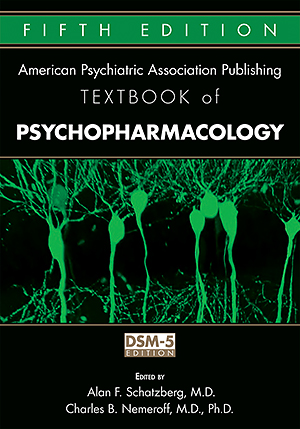Chapter 36.Lithium
Sections
Excerpt
After noting the sedating properties of lithium in animals, Cade first described the successful treatment of mania with lithium salts (Cade 1949). The U.S. Food and Drug Administration (FDA) approved lithium for the treatment of acute mania in 1970 and for the maintenance treatment of bipolar disorder 4 years later (Jefferson and Greist 1977). However, lithium did not enter the market easily in the United States. Pharmaceutical companies were reluctant to produce this inexpensive drug that they could not patent (Kline 1973). Lithium is a highly cost-effective treatment for bipolar disorder (Chisholm et al. 2005). A growing number of medications with proven efficacy in bipolar disorder have become available since the introduction of lithium, including anticonvulsants and second-generation (atypical) antipsychotics. In contrast to many of these medications, lithium is available generically and is relatively affordable. These features, added to lithium’s effectiveness, have given it longevity among the psychopharmacological treatment options for bipolar disorder.
Access content
To read the fulltext, please use one of the options below to sign in or purchase access.- Personal login
- Institutional Login
- Sign in via OpenAthens
- Register for access
-
Please login/register if you wish to pair your device and check access availability.
Not a subscriber?
PsychiatryOnline subscription options offer access to the DSM-5 library, books, journals, CME, and patient resources. This all-in-one virtual library provides psychiatrists and mental health professionals with key resources for diagnosis, treatment, research, and professional development.
Need more help? PsychiatryOnline Customer Service may be reached by emailing [email protected] or by calling 800-368-5777 (in the U.S.) or 703-907-7322 (outside the U.S.).



